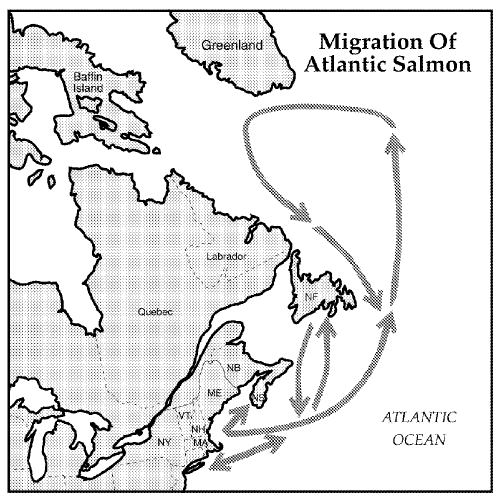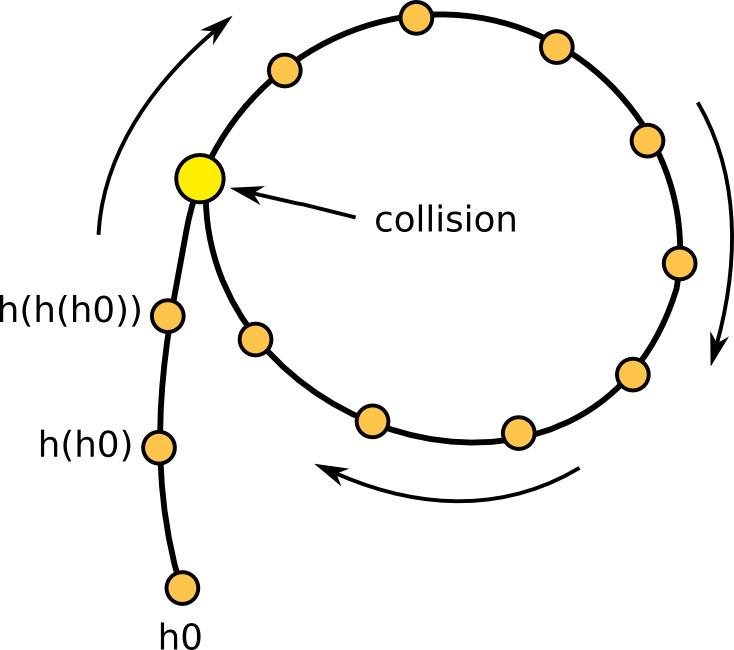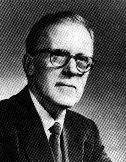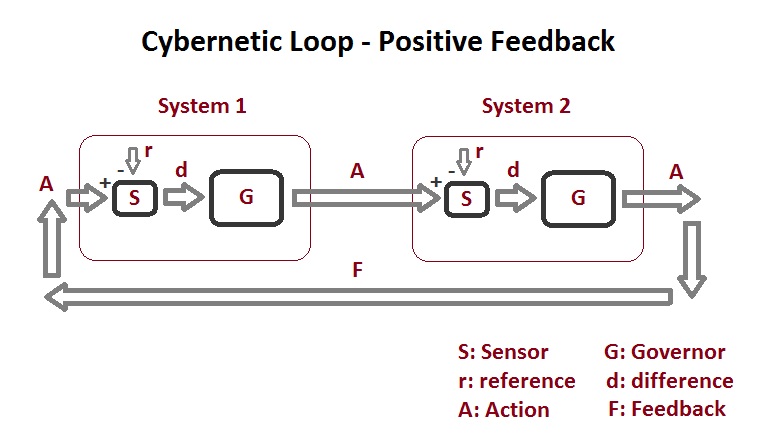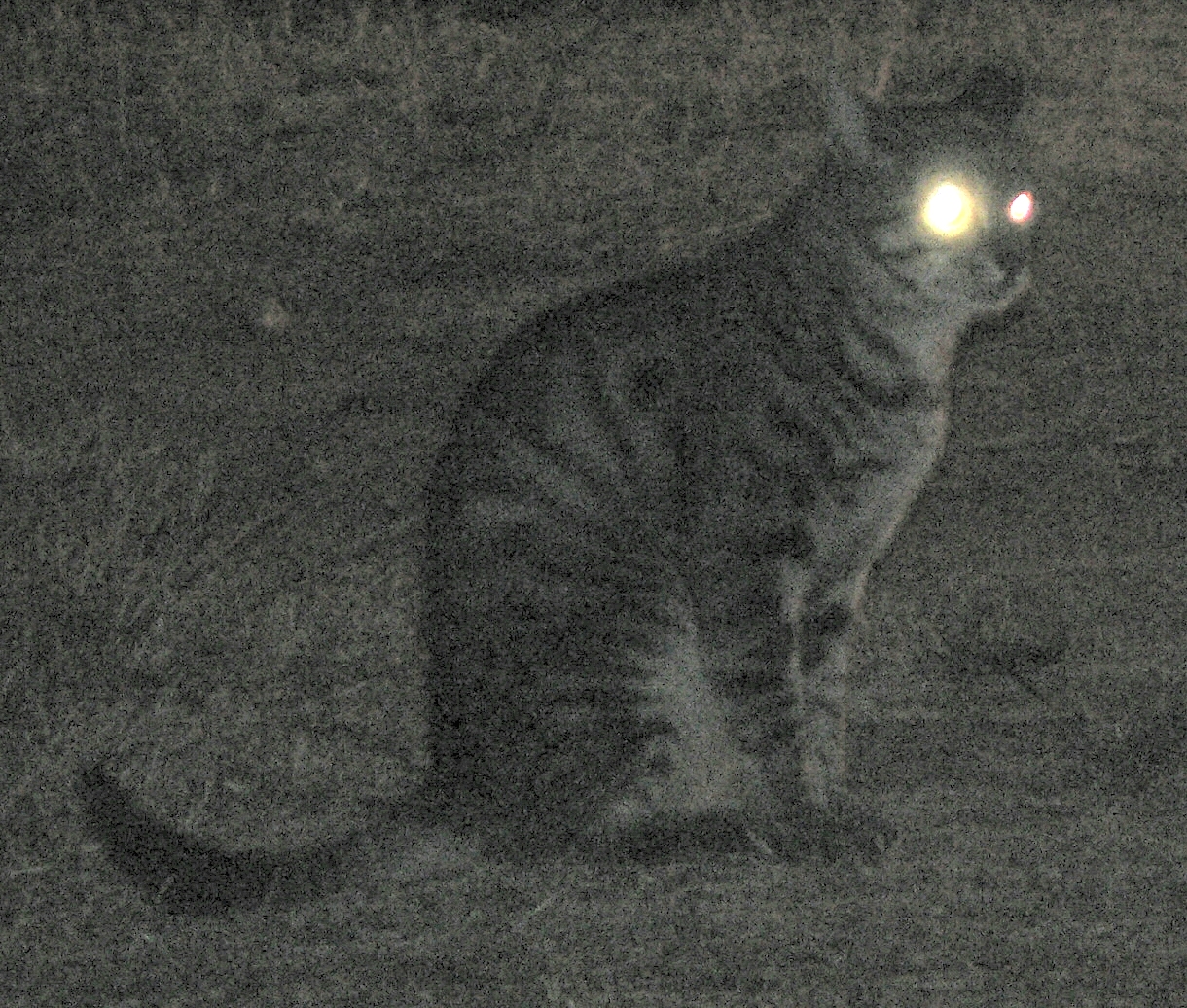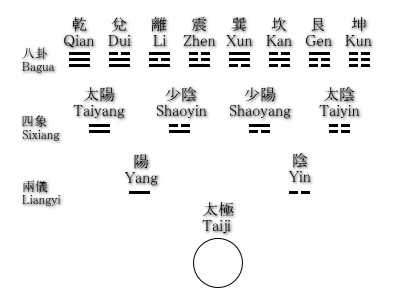
Probing the Brain
What are the mechanisms of human memories? A human memory is the playback of a perception, like the taste of sugar or the look of someone’s face. The mechanisms proposed here are a combination of naturally occurring feedbacks and equivalence. Such mechanisms do not involve storage and retrieval. For centuries theories about storage/retrieval, encoding/decoding in the brain have been unfruitful. The feedback mechanism here circumvents that and charts a new course to the mind.
Memory recall of past events can be specific or approximate. What did you have for dinner last night? where is Jerry's school? To answer correctly, one must make a conscious effort or it is just guessing. How do feedbacks and equivalence provide a way for specific recall? In this discussion specific recalls are actually more evolved. They depend on two additional mechanisms: adaptation and resonance. We will get into that when we go over sequential (objective) memories and associative memories. First, let us see how a feedback mechanism can explain the simplest type of memory - recognition.

By Roberto Ferrari from Campogalliano (Modena), Italy
Wile E. Coyote Can Run On Two Legs Like People
Recognition, or re-cognition, is the replay of a perception. It is a perception that something similar or approximate had been experienced before. When a child watches cartoons he sees the drawn figures as people, even though the figures are only somewhat similar to actual persons. That is recognition. When Harry meets Sally, he has her name at the tip of his tongue. That is also recognition. When one eats Thai food and finds it similar to Chinese food. That is still recognition. Recognition has this trait - it is similar but not the same as the original cognition. To use feedbacks and equivalence to explain this evocation of prior experience, we need to first describe what are feedbacks and equivalence in the context here. Feedbacks here refer to IFP feedbacks, which are Impulse Firing Patterns (IFPs) going around from neurons to neurons and back. Neurons are nerve cells that can fire voltage impulses. The aggregate of these voltage impulses, relating to a particular sensory impression, is called a pattern, or an IFP.
Computer Simulation of Neurons Firing Impulses
IFPs travel spatially and change temporally. Inside a body, IFPs propagate along neural pathways, notably in the cortical regions of the brain where scientists scrutinize the most. Neurons in different regions have different numbers of synaptic connections and biochemical surrounding. These differences affect the outcome of the firings. The neuronal impulse firings can also change in response to the modulations of sensory inputs. Many computer animation clips show that impulse firings are sporadic and isolated. But that is not what EEG (electroencephalography) shows. EEG is a very coarse wiretapping of IFP, and its output is continuous and rhythmic.

EEG, ElectroEncephalogram, Records Voltage Variations from Impulse Firings
Outside a body’s nervous system there are no neuronal impulse firings, so therefore no IFPs. But metaphorically we say that IFPs can transform into patterns of physical actions and reactions that reach outside. For example, nerve impulses excite bodily actions such as arm and leg movements, facial expressions, or verbal communications. Those actions trigger responses in the environment such as people looking or cats running away. Those reactions trigger further reactions such as laughs.
Feedback In Nature Is Mutual Causal Interaction.
IFP Feedback Is Mutual Causal Firings
Then, at some point, some reactions reach back and catch the instigating subject’s attention. The subject’s senses thereupon fire up IFPs again internally in the nervous system. That IFPs travel up to the brain and trigger consequent internal transformed IFPs there. This circuit of propagation, or feedback loop, can be described as IFPs-inside-body to actions-outside-body to IFPs-inside-body and so on.
In such a metaphor, neural IFPs travel in and out of a body physically or virtually. Sinbad the Sailor did seven voyages in a tale of the Arabian Nights. In each voyage he disappeared abroad. Then he returned home, became a much changed man, lived a domestic life for a while, and then yearned to go overseas again. Just so, IFPs disappear outside a body, return back in the body, and then vanish yonder again. They go round and round and in and out. So too are all things that move in cycles in this world. Water, starting as an arbitrary drop somewhere, in a lake or a river or the inside of a living being, will travel away from that point of origin and come back again. Shifting the place of origin does not change the nature of circulatory propagation. They always transformatively exit from and return to the arbitrary point of origin. However, in the discussion of memory we do need an arbitrary starting point. The origin point can be at the nerve endings of the senses, or it can be in the cortical regions of the brain since that may be where perceptions are immanent.
IFPs Are Equivalent to Sensations/Actions
So much about the feedback part of IFPs. What is the equivalence part of memory? Equivalence here refers to the relation between impulse firing patterns (IFPs) in the brain and mental perceptions (MPs) in the mind. It is an inseparable co-presence of one another. On the one side is a physical formation of neuronal firings, and on the other a mental in-formation of perceptions. Where one exists, the other one must co-exist also. If an IFP takes place in the brain, a mental sensation is perceived by a person. Conversely, when a person has mental perceptions, his brain (or nervous system) is firing IFPs.
One notable example of equivalence is the phenomenon of gravity. Gravity was discovered by Sir Isaac Newton and studied by Dr. Albert Einstein. Newton pointed out that mass and gravity were equivalent. Wherever there is mass there is also gravity, and vice versa. The story was that an apple, pulled down by the mass of the Earth, hit Newton’s head while he was under the tree. The falling apple was a revelation to Newton. Because at that time he had been puzzled deeply by why the planets orbiting around the Sun elliptically without flying off in straight lines. He couldn’t have peace without an answer. Then the mystery was solved by the falling apple because the Earth was pulling it to the ground. Just so the Sun was also pulling the planets towards itself that resulted in elliptical orbits of the planets. And Newton called this revelation of massive pulling force Gravity.
Equivalence of Acceleration and Gravity
A couple of hundred years later Dr. Einstein pondered on the speed of light, and pointed out that acceleration and gravity are equivalent. In his theory of General Relativity he used an imaginary elevator to illustrate this. When one experiences acceleration in an elevator, that experience is indistinguishable from a weight or the pull of gravity. Both Einstein’s and Newton’s equivalences can be seen in the basic physics formula F = M * A, force equals to mass times acceleration. Newton emphasized the F and M part of the equation and showed that mass and gravity (force, or weight) were always co-present. Similarly Einstein picked the F and A part of the equation and showed that acceleration and force (gravity) were always co-present. Equivalence in this discussion simply means the co-presence of Items on different sides of an equation.
Einstein's Elevator
With feedbacks and equivalence, recognition can be explained this way. IFPs circulate virtually from the outside to the inside of a person’s body. They are feedbacks a person gets from the environment. Or simply, a person sees, touches, smells, hears, or tastes something around him. At the boundary of the body, these IFPs are triggered by the senses and then travel up to the brain physically. In the brain mental perceptions (MPs) take place as the equivalent of IFPs. These equivalences are called sight, feeling, odor, sound, taste. The first time these IFPs circulate in the brain a person has a cognition, or sensory perception. The second time similar IFPs circulate again along the same internal pathways, this person will have not only a cognition, but also a recognition. The second cognition reminds him he has a similar cognition before.
Why does the second circulation of IFPs make one know of a similar cognition before? The question has to do with what “knowing” is. We contend that knowledge is a mental feat based on memory. Knowledge-memory is an act of associating one perception to another perception, or a text to its context. The act of association can be done through feedbacks (and resonance) that allow triggering of one IFPs to or from another IFPs.

By Dirk Beyer. A Buddha Statue in Kamakura
A young man once had an extraordinary experience. His friend went on vacation to Japan. The friend took some pictures of a giant Buddha statue near a temple. He came back home and showed the pictures to the young man. The young man’s eyes got wide open, “I have seen this Buddha statue before. I was there, but I have never traveled to Japan in my life! How could it be? Was I dreaming? Yes I think I saw it in a dream.” This is an example of what the French called Deja Vu. Many people have experienced deja vu. They remember seeing or hearing something, but find it very odd to explain how they saw it in the first place.
The recognition mechanism applies here. When the young man sees his friend’s pictures of the Buddha statue, he is having certain IFPs coursing through his brain a second time (IFPs 2). The first time was when he maybe dreamed about it (IFPs 1). (IFPs 1) has a seeing-the-statue part (IFPs 1-0) and a context: a dream (IFPs 1-1). Or (IFPs 1-1) is a perception of waking up from dreaming. Anyway, (IFPs 1-1) is the context of (IFPs 1-0). Or (IFPs 1-0) and (IFPs 1-1) are related in that they are sequential or concurrent plays of a streaming perception. So when (IFPs 2) is playing out in the brain, (IFPs 1-1, the context) is triggered to play back because (a) (IFPs 2) is similar to (IFPs 1-0), enacting in the same areas of the brain, and (b) the neural propagation pathways between (IFPs 1-0) and (IFPs 1-1) have not changed much. Now (IFPs 2) leads to (IFPs 1-1), and (IFPs 1-1) triggers a replay of (IFPs 1-0) by means of feedback (or resonance). The event sequence is (IFPs 2) to (IFPs 1-1) to (IFPs 1-0). This becomes recognition, or seeing-Buddha-in-picture leads to replay of seeing-Buddha-in-dream.
Actual Footage of (Partial) Impulse Firing Patterns
While IFPs are physical activities that can be partially probed and coarsely recorded as EEGs, MPs (mental perceptions) are informational phenomena that cannot be physically measured. They are information (text) that can be referenced by other information (contexts). The anthropologist Gregory Bateson defines information as a difference that makes a difference. MPs may be consciously known or subconsciously unaware. In the Buddha-pictures example, the context is remembered since it was a dream known consciously. So the recognition is lucid. Yet dreams are often forgotten. If a context is submerged subconsciously, then recognition can become fragmented. The taste of Thai food reminds one of Chinese food, but one may be vague about where the resemblance comes from. Harry cannot recall Sally’s name even though it is at the tip of his tongue. The context of hearing her name is yet to surface into Harry’s consciousness so possibly the subsequent recall of her name is buried as well. A child takes the actions in cartoon as actions of real people. Since human actions are imprinted into the child’s sensations daily. That become contexts for the child’s understanding of the cartoon. It is a false recognition.
Dr. Elizabeth Loftus Describes False Memory
False memories (recognition) in adults have been studied recently as a reality. In some cases criminal suspects are convicted by the testimony of eyewitness. Then it turns out that DNA testing or some other evidences exonerate the jailed convicts. It is not that the unwitting witnesses make up false testimony. But they sincerely remember something that was not what happened. The witnesses’ memory of the crime events prove to be faulty.
The psychologist Oliver Sacks has written a story about his own false memory that he is keenly aware of. The mystery of such false memory seems to be solvable. Studies show that false memories can be implanted by seeding questionable contexts into a subject. In the feedback model false context IFPs can trigger alternate firing of text IFPs, which become false memory. It is akin to a cartoon roadrunner being taken as a real bird, or Santa Claus being the real gift bearer. The meaning of the context is just as relevant as the meaning of the text. Without context, a text is a thing-in-itself (ding-an-sich), a magnetic monopole, an axiom of a treatise. It becomes inexplicable.
How To Implant a False Memory
One serious consequence of alternate contexts is political diatribes. One party accuses the other party of falsehood. Mutual accusations can go on and on ad infinitum because the two opposing parties insist on different contexts for an issue. The arguments will stop once they agree on a same context. So to bring political discords into agreeable discussions is a matter of harmonizing contexts used by the parties. That could be a wide open field of research in psychology.

fMRI Scan During Memory Tasks
Red Areas Indirectly Indicate Neuron Activities
Although IFPs are physical activities vital to memory, they are not yet visible. What do IFPs really look like? They take place among neurons. Some computer graphics videos show artistic renderings of individual neurons firing impulses. But the graphics do not depict the firings as a group nor in a sequence. The more advanced fMRI (functional magnetic resonance imaging) and EEG (electroencephalogram) pictures provide better but indirect glimpses into IFPs. But they are still like representing a 3D object in a 2D medium. Is there another way to see IFPs? Perhaps there are analogs in nature that may resemble IFPs. We can look for phenomena that share common characteristics. These characteristics must include (1) multiple similar active elements, and (2) actions / reactions among the elements in feedback loops.
Examples can be a school of fish fleeing at the approach of sharks, or weather systems instigated by the temperature gradients of flowing ocean currents. Additionally, individual branches of IFPs may resemble the path of lightning. But this is all incomplete and imagined.
Movement of Weather Systems May Resemble Movement of IFPs
One important note about feedbacks. In feedback loops, the presence of active systems is essential. Feedback loops are different from circulation loops in that their pathways consist of active elements instead of passive ones. Passive elements are pushed or pulled along. They do not have internal energy supply. When one billiard ball hits another one squarely, the second ball moves faster or slower depending on the momentum of the first one. Active elements are those that have their own energy supplies and react independently to the input’s energy level. Neurons have their own energy supply from blood. The response of neurons to impulse inputs can be to fire impulse output or to not fire, or to fire impulses that promote or inhibit other neurons’ firing. They make the interactive outcomes complex, unpredictable, and alive.
In simple or nested feedback pathways the overall IFPs are the aggregates of numerous individual neurons firing or not firing over the time period of an input event (and maybe beyond). Also, the neural feedback pathways themselves will change with the wax and wane of synaptic connections. That is an additional layer of complexity, a part of neuroplasticity. Some cortical regions are more developed than others, just like some body parts are more dominant than others, like a left eye or a right hand. The growth of brain regions is subject to economic / ecological forces, as the flux of IFPs can promote or reduce cortical blood circulation (for energy supply to neurons), and thereby indirectly stimulate or demote synaptic connections of neurons and perhaps even the number of neurons. “The rich get richer, the poor get poorer, a revolution resets all, then it starts over” is a generalization applicable to economics as well as to physiology. Both are systems of active elements interacting in feedback loops, subjected to positive and negative feedback controls.
Neuroplasticity Animation
While the magnitude of complexity of IFPs is gigantic, it enables the IFP-feedbacks model of memory to solve two problems that a storage model cannot. One is the question of how much a brain can remember. The storage model suggests that a human brain cannot store much. 100 billion neuron cells in a brain can roughly store 6 hours of DVD-quality sight and sound information. Since 1 DVD has about 4 GB of memory and plays for about 2 hours of audio/video, and one neuron can store 1 bit of information. Do we remember only 6 hours of sight and sound of life? Of course we remember more than that. The IFPs, however, being firing patterns of neurons, have far more combinations than the number of neuron cells. The combinations of impulse firing variations are on the order of 2 to the power of the total number of neurons in one time instant. Integrating all the instants when the input event occurs, the number of possible IFP combinations is on the order of (one instant combinations) to the power of (number of instants). Theoretically it is practically limitless how many firing patterns - or perceptions - can manifest in one’s brain, even though an adult human brain holds only 86 billion neurons on average, as found by Dr. Suzana Herculano-Houzel and her team.
The other question is where memories are located in the brain. The storage model requires specific locations be dedicated to memory. That was disproved by experiments of neuroscience. Patients who have brain operations can loose some memories due to some parts of the brain being removed. But later some of that lost memory will return as the brain heals. The feedbacks model can explain this because IFP feedback pathways in the brain are multiple and redundant, like tree branches. Neuron’s dendrites grow outward to form synaptic connections with other neurons like tangled vines. In such entangled network of connections redundancy of impulse pathways is normal, while singular IFP pathways are less likely because singular pathways come from environmental constraints. It is a specialization process that develops later.

By Andrew Teubes, Entangled Vine, Similiar to Entangled Neurons.
In redundant circuits, if some routes of the pathways are blocked or lost, other regions can take over and reestablish the lost branches. Why is that so? The process is unclear, but it can be illustrated by the phenomena of body metabolism. The effect is commonly seen in healing and during growth. A child can regrow a new tooth when an old one is lost. A severed finger can regrow connective tissues if attached back in time. A familiar melody can be recalled in totality when only a few notes is played. They show that somehow some interactions, perhaps just by iterations of feedbacks, can reestablish missing parts and make it whole again. It is like recognition that can play back memories by feedback of context. Anyway, self-reconstructing missing parts of redundant structures is a natural phenomena. Trees do that when branches are broken off. The TV game show Wheel of Fortune is popular because everyone can play and win prize money by reconstructing blank words into full phrases.
By Fallerd. Missing Tissues Are Replenished As the Wound Heals
Finally, this theory of memory is based on the axiom of F.A.R.E. mechanisms - feedbacks, adaptation, resonance, equivalence. The F.A.R.E mechanisms themselves are not explainable, since the presumptions or axioms of theories are unexplainable by the theories themselves. The Declaration of Independence of the U.S. states that “.... We hold these truths to be self-evident, that ….”. That self-evident truths are unprovable presumptions. The mathematician Kurt Godel proved this oddity in his formal treatise the Incompleteness Theorem. Anyway, the F. and the E. mechanisms can produce recognition-memory, and they involve ambiguous similarities that lead to either false recognition or correct memory. An additional mechanism - adaptation (A.) - can produce faithful and consistent recalls. That will be the topic of sequential memory, which is also called muscle memory or objective memory. We will get into that later. Next we will examine some more examples of false recognition in order to be clearer about what similarities are when we talk about similar IFPs and memory.






